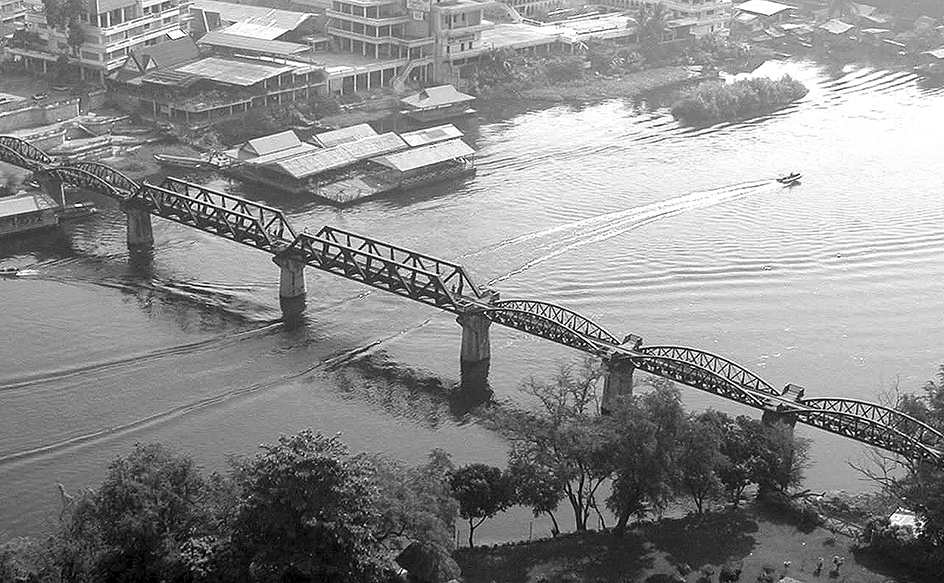Burma Railway was a railroad built by the Imperial Japanese Army in Southeast Asia during World War II (1939-1945). It ran some 258 miles (415 kilometers) from Nong Pladuk, Thailand, to Thanbyuzayat, Burma (now Myanmar). The purpose of the railway was to transport supplies and Japanese troops throughout the region. The Japanese forced local civilians and Allied prisoners of war (POW’s) to build the railway. About 100,000 people died during its construction. Because of the large number of deaths, the Burma Railway is sometimes called the Death Railway. It is also known as the Burma-Thailand Railway or the Thailand-Burma Railway.

Background.
On Dec. 7, 1941, Japan attacked the United States naval base at Pearl Harbor, Hawaii. The United States, Australia, the Netherlands, and the United Kingdom declared war on Japan the next day. From December 1941 to April 1942, the Japanese routed Allied forces in Southeast Asia and some Pacific islands. Many thousands of Allied soldiers were taken prisoner.
The Japanese forced more than 60,000 POW’s to work on the Burma Railway. The majority of them were British, Dutch, and Australian. Hundreds of American POW’s also worked on the line, as did some Indians, New Zealanders, and others. More than 200,000 civilians were forced to work on the railway. Most of the civilian laborers came from Burma, China, Java, and Malaya (now part of Malaysia). Koreans and Japanese—about 15,000 troops and laborers—also worked on the project.
The railway.
Construction on the Burma Railway began at both ends of the line in June 1942. The railway’s path crossed through difficult terrain, including jungles, mountains, ravines, and rivers. The railway required the construction of hundreds of bridges. Workers had to cut through stone, chop down trees, move earth, and build embankments. They used simple tools such as buckets, chunkels (large hoes), hammers, pickaxes, and shovels.
Workers suffered terribly from heat, infection, insects, and malnutrition. Many died from overwork, starvation, and disease. Others died from abuse by Japanese guards. Laborers and POW’s were routinely tortured, beaten, and humiliated. At times, the Japanese bayoneted and shot Allied prisoners. Japanese soldiers, believing surrender to be dishonorable, often treated POW’s with great cruelty. The railway was completed in October 1943.
In 1945, Allied warplanes destroyed parts of Bridge 277—remembered as the Bridge on the River Kwai. Allied air raids also destroyed other parts of the railway during the war, reducing its usefulness. The air raids, however, sometimes killed Allied POW’s working or living nearby.

Aftermath.
An estimated 13,000 POW’s and 90,000 civilians died building the railroad. About 1,000 Koreans and Japanese also died. Many of the deaths came during the “speedo,” a period of accelerated production from April 1943 until the railway’s completion.
Most of the Burma Railway was dismantled after the war. However, an 80-mile (130-kilometer) stretch still operates in Thailand. Bridge 277 was repaired after the war and still stands over a section of the River Kwai Yai (also spelled Khwae Yai or Kware). Large war cemeteries and a number of memorials and museums commemorate the people who worked and died on the railway.
See also Bridge on the River Kwai, The ; World War II (The war in Asia and the Pacific) .
